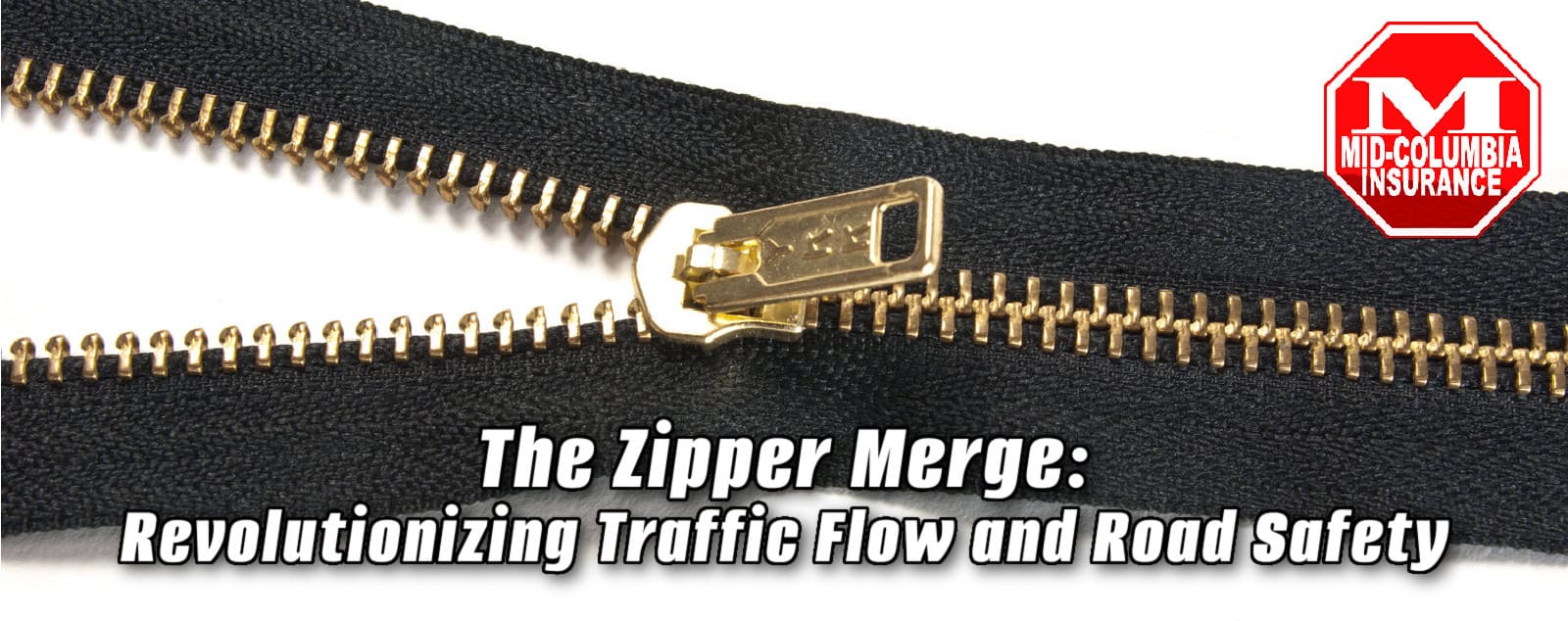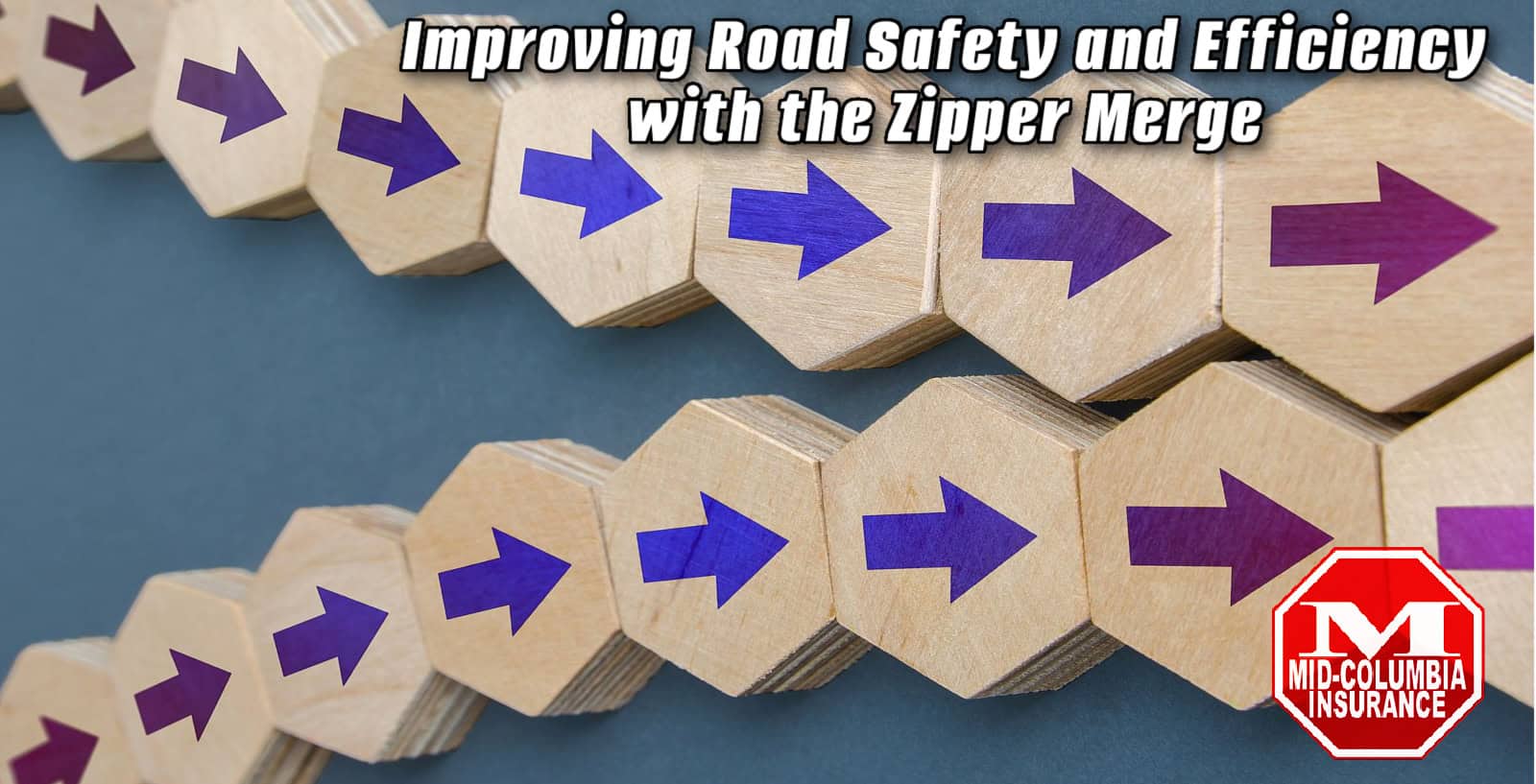
What is a Zipper Merge?
A zipper merge is an efficient and effective merging technique designed to improve traffic flow and reduce congestion in areas where multiple lanes converge into a single lane. This innovative method encourages drivers to fully utilize all available lanes until reaching the designated merge point, at which point they alternate merging into the open lane, creating a zipper-like pattern.
How Does the Zipper Merge Work?
The zipper merge concept is relatively simple and easy for drivers to understand. When approaching a lane reduction or construction zone, drivers should continue traveling in their respective lanes until reaching the designated merge point. At this point, vehicles from each lane take turns merging into the open lane, creating a smooth and orderly transition. This process maximizes road capacity and minimizes the speed differential between lanes, ultimately improving traffic flow efficiency.
To execute a proper zipper merge, drivers should:
- Maintain a consistent speed while approaching the merge point
- Avoid early merging or cutting in line
- Use turn signals to indicate their intention to merge
- Allow vehicles from the closing lane to merge in front of them at the merge point
- Adjust their speed and position based on the flow of traffic
Benefits of Implementing the Zipper Merge
The zipper merge offers numerous advantages over traditional merging techniques, benefiting both individual drivers and the overall traffic system:
- Improved Traffic Flow: By reducing the speed differential between lanes and minimizing bottlenecks, the zipper merge helps maintain a consistent traffic flow, leading to shorter travel times and decreased congestion.
- Increased Road Capacity: When drivers utilize all available lanes until the merge point, the zipper merge maximizes road capacity, reducing the length of traffic queues and ensuring optimal lane utilization.
- Enhanced Safety: The predictable and orderly nature of the zipper merge reduces the risk of accidents caused by sudden lane changes or aggressive driving maneuvers, ultimately enhancing road safety for all users.
- Reduced Driver Frustration: By promoting fairness and efficiency, the zipper merge can alleviate driver frustration and minimize incidents of road rage, fostering a more cooperative driving environment.
- Cost-Effective Solution: Implementing the zipper merge is a relatively low-cost traffic management solution compared to infrastructural changes like road widening, making it an attractive option for transportation authorities.

Zipper Merge in Washington State
In Washington state, the zipper merge has been widely promoted by the Washington State Department of Transportation (WSDOT) as an effective strategy for managing traffic congestion and improving road safety. The state has implemented zipper merge signage and public education campaigns to raise awareness and encourage driver participation.
Some notable zipper merge implementations in Washington include:
- I-5 construction zones in the Seattle area
- SR 520 bridge construction projects
- I-90 lane reductions near Snoqualmie Pass
WSDOT has reported positive results from these implementations, with improved traffic flow, reduced queue lengths, and decreased accidents in zipper merge zones.
Overcoming Challenges and Misconceptions
Despite the numerous benefits of the zipper merge, its widespread adoption faces several challenges and misconceptions:
- Driver Education: Many drivers are unfamiliar with the zipper merge technique or mistakenly believe that early merging is more polite or efficient. Overcoming this knowledge gap requires ongoing public education and awareness campaigns.
- Cultural Acceptance: In regions where the zipper merge is not widely practiced, drivers may be hesitant to embrace the technique, fearing that other motorists will perceive their actions as rude or aggressive. Building cultural acceptance takes time and consistent reinforcement.
- Enforcement: Ensuring driver compliance with zipper merge protocol can be challenging, as it relies heavily on individual cooperation and participation. Some jurisdictions may consider implementing legal enforcement measures, such as fines for non-compliance, to encourage proper execution of the technique.
- Infrastructure Limitations: While the zipper merge is highly adaptable to various road configurations, certain infrastructural limitations, such as short merge zones or inadequate signage, can hinder its effectiveness. Addressing these limitations may require targeted investments in road improvements and signage upgrades.

The Language of the Zipper Merge
To effectively discuss and implement the zipper merge technique, it’s essential to understand the terms used and key elements associated with it. Some important aspects include:
- Standard Practices: Merging at the designated point, alternating turns, maintaining consistent speed, avoiding early merging, yielding to merging vehicles, and following posted signs are standard practices that define proper zipper merge execution.
- Key Characteristics: Efficiency, fairness, cooperation, predictability, safety, simplicity, adaptability, compliance, timing, and communication are key characteristics that describe the zipper merge concept.
- Unique Features: The zipper merge is distinguished by its unconventional approach, equal merging pattern, reliance on cooperation, specific applicability, need for changed perceptions, spatial awareness requirements, dependence on signage, necessity for behavioral changes, ability to withstand disruption, and scalability.
| Element | Description |
|---|---|
| Merge at the Merge Point | Drivers should continue driving in their lane until reaching the designated merge point before alternating into the open lane |
| Alternating Merging | Vehicles from each lane should take turns merging into the open lane, creating a “zipper” pattern |
| Maintain Consistent Speed | Drivers should maintain a steady, predictable speed while approaching the merge point to facilitate a smooth transition |
| Avoid Early Merging | Drivers should not attempt to merge early or cut in line, as this can disrupt the zipper merge process and cause delays |
| Yield to Merging Vehicles | Drivers in the open lane should allow vehicles from the closing lane to merge in front of them at the merge point |
Measuring the Effectiveness of the Zipper Merge
Quantifying the impact of the zipper merge is essential for assessing its effectiveness and making data-driven decisions. Key measures include:
- Traffic Flow Rate: The number of vehicles passing a specific point per unit of time, which can gauge the zipper merge’s impact on overall traffic flow.
- Travel Time: The time it takes for a vehicle to traverse a given distance, which may be reduced by implementing the zipper merge.
- Queue Length: The length of the line of vehicles waiting to merge, which can be minimized by employing the zipper merge technique.
- Merge Point Efficiency: The ratio of vehicles successfully merging at the designated point compared to the total number of vehicles attempting to merge.
- Lane Utilization Ratio: The proportion of vehicles using each available lane leading up to the merge point, ideally maximized by the zipper merge.
Conclusion
The zipper merge represents a paradigm shift in traffic management, offering a simple yet effective solution to the challenges of lane reductions and congestion. By encouraging cooperation, maximizing road capacity, and promoting a predictable merging process, the zipper merge has the potential to revolutionize the way we navigate our roads.
As transportation authorities, policymakers, and drivers alike recognize the numerous benefits of the zipper merge, its widespread adoption can lead to safer, more efficient, and less frustrating commutes for all. Through ongoing education, public awareness campaigns, and targeted infrastructure improvements, we can harness the power of the zipper merge to create a more harmonious and productive driving environment.
Mid-Columbia Insurance
– Your Trusted Insurance Agent
Call (509)783-5600 and speak to one of our independent insurance agent professionals today, or click “Get a Quote” to request an insurance quote.
The insurance you want — At a price you can afford.
